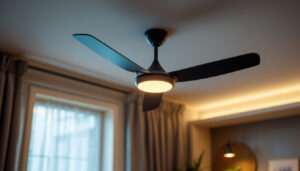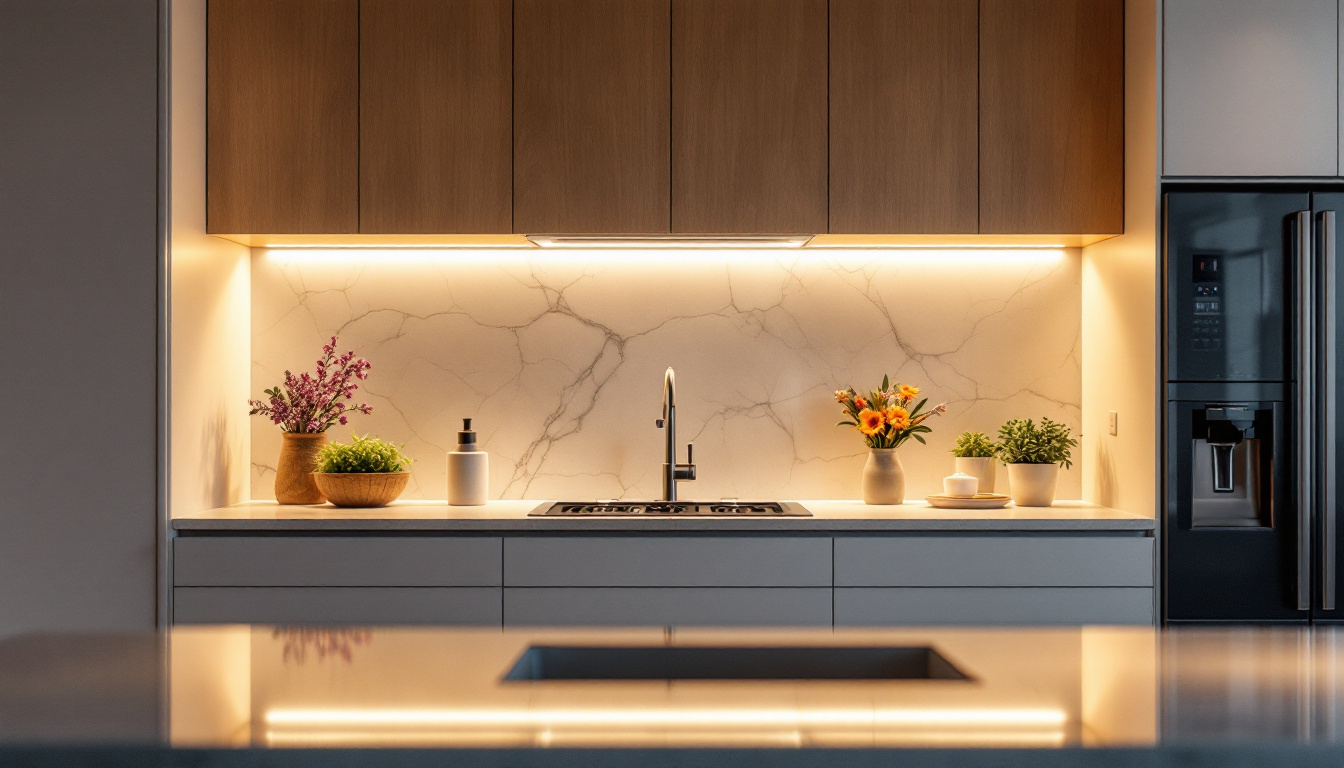

light tube LEDs have revolutionized the way lighting projects are approached, offering energy efficiency, longevity, and versatility. These fixtures are designed to replace traditional fluorescent tubes, providing a more sustainable option that can significantly reduce energy costs. For lighting contractors, understanding the nuances of light tube LEDs is essential for delivering high-quality installations that meet client expectations.
Before diving into the specifics of avoiding costly mistakes, it is crucial to grasp the fundamental characteristics of light tube LEDs. They come in various lengths, color temperatures, and brightness levels, making them suitable for a wide range of applications, from commercial spaces to residential settings. This adaptability is one of the key reasons why they have gained popularity among contractors and clients alike. Furthermore, many light tube LEDs are now available with smart technology features, allowing for remote control and programmable settings, which adds an extra layer of convenience and customization for users.
One of the primary advantages of light tube LEDs is their energy efficiency. Compared to traditional fluorescent tubes, they consume significantly less power while providing the same or even greater levels of illumination. This efficiency translates into lower electricity bills for clients, making it an attractive selling point for contractors. In addition, the reduced energy consumption contributes to a smaller carbon footprint, aligning with the growing demand for environmentally friendly solutions in the construction and renovation sectors.
Additionally, light tube LEDs have a longer lifespan, often lasting up to 25,000 hours or more. This longevity means fewer replacements and maintenance costs over time, which is a critical consideration for both contractors and their clients. Understanding these benefits allows contractors to present compelling arguments when recommending light tube LEDs for various projects. Moreover, the durability of these LEDs often means they are less prone to breakage compared to fragile fluorescent tubes, making them an ideal choice for high-traffic areas or installations in challenging environments, such as warehouses or industrial settings. As technology continues to advance, the integration of features like dimming capabilities and color-changing options further enhances the appeal of light tube LEDs, providing even more flexibility for diverse lighting needs.
Despite the advantages of light tube LEDs, many lighting contractors still encounter pitfalls that can lead to costly mistakes. Recognizing these common errors is vital for ensuring successful project outcomes and maintaining client satisfaction. Below are some of the most frequently observed mistakes in lighting projects involving light tube LEDs.
One of the most significant mistakes contractors make is failing to adequately plan and design the lighting layout before installation. A well-thought-out design considers factors such as the purpose of the space, the desired ambiance, and the specific lighting needs of the client. Without this foundational step, the end result may not meet the client’s expectations, leading to dissatisfaction and potential rework.
Moreover, inadequate planning can result in improper fixture placement, which may create uneven lighting or excessive glare. It is essential to conduct a thorough assessment of the space and engage with clients to understand their vision and requirements fully.
Color temperature plays a crucial role in how a space feels and functions. Light tube LEDs are available in a range of color temperatures, from warm white to cool daylight. Selecting the wrong color temperature can drastically alter the atmosphere of a room and may not align with the client’s intended use of the space.
For example, warmer tones are typically preferred in residential settings for a cozy feel, while cooler tones may be more suitable for commercial environments where productivity is a priority. Contractors should take the time to discuss color temperature options with clients and consider the specific applications of the lighting to avoid this common mistake.
In addition to design and aesthetic considerations, there are several technical aspects that contractors must be aware of when working with light tube LEDs. Understanding these elements can help prevent costly errors and ensure a successful installation.
Many contractors assume that all light tube LEDs are universally compatible with existing fixtures. However, this is not always the case. Some LED tubes require specific types of ballasts or may need to be installed in a direct-wiring configuration. Failing to verify compatibility can lead to flickering lights, reduced performance, or even complete fixture failure.
Before proceeding with an installation, it is advisable to conduct thorough research on the specific LED products being used and their compatibility with the existing infrastructure. This diligence can save time and resources in the long run.
Another common oversight is misunderstanding the relationship between wattage and lumens. While wattage indicates energy consumption, lumens measure the amount of light produced. Contractors must ensure that the chosen light tube LEDs provide adequate lumens for the intended application, regardless of their wattage.
It is essential to communicate with clients about their lighting needs and expectations, as well as to educate them on the differences between these two measurements. This knowledge can help in selecting the right products that meet both energy efficiency and brightness requirements.
Successful installation of light tube LEDs requires adherence to best practices that can enhance performance and longevity. By following these guidelines, contractors can minimize the risk of errors and ensure that clients receive the best possible outcome.
Correct mounting techniques are crucial for the performance of light tube LEDs. Ensuring that fixtures are securely mounted and positioned correctly can prevent issues such as flickering or uneven lighting. Additionally, proper alignment can enhance the aesthetic appeal of the installation.
Contractors should familiarize themselves with the manufacturer’s installation guidelines and ensure that all team members are trained in proper mounting techniques. This attention to detail can significantly impact the overall quality of the lighting project.
Before finalizing a lighting project, it is essential to conduct thorough testing of all installed fixtures. This step helps identify any potential issues, such as flickering lights or color inconsistencies, allowing contractors to address them before handing over the project to the client.
Quality assurance should be a standard part of the installation process. By implementing a checklist and conducting systematic tests, contractors can ensure that every aspect of the lighting project meets the expected standards of quality and performance.
Effective communication with clients is paramount throughout the lighting project. Educating clients about the benefits and features of light tube LEDs can foster trust and confidence in the contractor’s expertise. Additionally, it helps clients make informed decisions regarding their lighting needs.
One of the most critical aspects of client communication is setting realistic expectations. Contractors should discuss the capabilities and limitations of light tube LEDs, ensuring that clients understand what to expect in terms of performance, energy savings, and aesthetics.
By managing expectations from the outset, contractors can reduce the likelihood of misunderstandings or dissatisfaction later in the project. This proactive approach can lead to stronger client relationships and potential referrals for future work.
Once the project is complete, it is beneficial for contractors to provide clients with maintenance guidance for their new lighting systems. This information can include tips on cleaning fixtures, replacing bulbs, and troubleshooting common issues. Educating clients on proper maintenance can prolong the lifespan of the lighting system and enhance overall satisfaction.
Additionally, offering ongoing support or maintenance services can create opportunities for contractors to build long-term relationships with clients, leading to repeat business and referrals.
The lighting industry is continually evolving, with new technologies and trends emerging regularly. For contractors, staying informed about these developments is essential for maintaining a competitive edge and delivering the best possible solutions to clients.
As light tube LED technology advances, new features and capabilities are introduced, such as smart lighting systems that allow for remote control and automation. Contractors should be proactive in learning about these innovations and considering how they can be integrated into their projects.
By embracing new technologies, contractors can offer clients cutting-edge solutions that enhance convenience and energy efficiency, ultimately leading to greater satisfaction and loyalty.
Engaging with industry peers and participating in professional development opportunities can provide valuable insights into best practices and emerging trends. Joining industry associations, attending trade shows, and participating in workshops can help contractors stay ahead of the curve.
Networking also opens doors for collaboration and knowledge sharing, which can further enhance the quality of lighting projects and the overall success of the contracting business.
Light tube LEDs present a wealth of opportunities for lighting contractors, but they also come with their own set of challenges. By understanding the advantages of these fixtures, recognizing common mistakes, and adhering to best practices, contractors can avoid costly errors and deliver exceptional results for their clients.
Effective communication, ongoing education, and a commitment to quality are essential components of successful lighting projects. By prioritizing these elements, contractors can build strong relationships with clients and position themselves as trusted experts in the lighting industry.
As the demand for energy-efficient and sustainable lighting solutions continues to grow, contractors who embrace the potential of light tube LEDs will be well-equipped to meet the needs of their clients and thrive in a competitive marketplace.
Ready to elevate your lighting projects with the efficiency and brilliance of light tube LEDs? At LumenWholesale, we provide lighting contractors with the highest quality, spec-grade lighting products at prices that can’t be beaten. Say goodbye to inflated markups and hello to a vast selection of reliable lighting solutions that meet the most rigorous industry standards. With free shipping on bulk orders, you can stock up on premium lighting without any hidden fees. Don’t compromise on quality or value—choose LumenWholesale for the best in lighting efficiency and affordability. Wholesale Lighting at the Best Value is just a click away.

Discover how the Sportsbeam Field Led 800 is revolutionizing lighting designs with its cutting-edge technology.

Discover how industrial warehouse LED lighting can revolutionize your lighting installation projects.

Discover the essential insights lighting contractors need to know about under cabinet lights.

Discover why lighting contractors should prioritize envisioning lighting in their projects.
Get notified when NEW deals are released.
Optimize your budget with wholesale discounts.
Only top-quality, specification-grade lighting products.
No additional costs at checkout - what you see is what you pay.
We understand the unique needs of contractors.